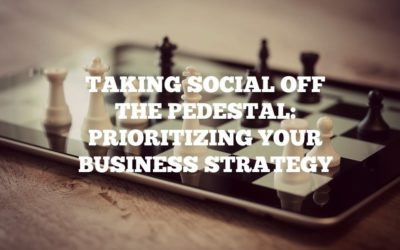Marketing online is a complicated step beyond traditional marketing in the physical world. Why do we say that? Because social media trends barely happen to stay the same from year-to-year. Oftentimes, we can see the trends changing within a year itself. That is just the inherent nature of how social media works, right?
Brands heading into the last few months of 2020 would want to ace their social media marketing strategy, while remaining current with the trends at hand. Most of 2020 has been lost to the destruction of COVID-19, which is why brands find themselves in a struggle of sorts to create an actionable strategy for the remaining months.
With more than a third of the year still left for you to make a change, this is the ideal time for brands to reflect and refocus on how they want to go about their social media strategy.
In this article we mention 10 interesting social media trends you ought to follow before the year ends. Regardless of what you sell, you can keep these trends in mind to conjure up an effective social media strategy.
1. Reevaluate the Metrics That Matter Most to You
Recent research by Sprout Social pointed out that social media marketers have their eyes on a variety of metrics to ensure what’s working and what is not working on social media. The research found that different social media managers define success through different metrics.
Seventy two percent of all social media managers define success through likes or comments, 62 percent from shares, 60 percent from interaction with customers, 34 percent from revenue attribution, 32 percent from inspiring customers into action and 29 percent define success through inspiring an emotional response.
However, Instagram and Facebook have both tested the planned removal of public likes from their platform. From showing the number of likes on every post, these two mega giants of the social media world have decided to keep likes private.
While private likes are now very much a part of Instagram, Facebook is still testing the move. This may force a transition from using ‘Likes’ as the ultimate metric for defining content performance. And, even if Likes didn’t disappear, it is time for marketers to look beyond data at the surface level.
Social listening will be crucial in 2020. The world just came out of a pandemic, and it can suit you better to focus on sentiment analysis, rather than surface level metrics such as Likes and Comments.
2. Target Private Communities Driven by Interest
How do you build sentimental value in your customers? To answer this question, brands have started focusing on building long-lasting and sentimental connections with their target audience in shared, private groups. This is a move away from the ‘anybody and everybody’ approach brands had previously.
Brands still do want to reach as many customers as they possibly can, but the impact of marketing to groups with shared passions and interests surely speaks for itself. Targeting specific groups with shared interests and passions allows brands to talk to individuals in a sentimental manner.

With the advancements in technology, brands are more empowered to reach customers directly. The example above illustrates just how brands can target individual sentiments through their responses.
Also, the social media trend to interact with a specific audience is trending in consumer circles as well. Private closed groups on Facebook allow social media users to interact openly with people who share the same interests. Also, users can share stories and pictures with specific people through Instagram Threads.
Facebook does have a group marketing option in place, and it offers a valuable way for brands to market to private communities or ‘tribes’ as some may call them.
3. Find Authentic Influencers
Influencer marketing isn’t going anywhere; in fact, it is just maturing over time. For a brief time in the middle, brands confused influencer marketing on social media with building hype and excitement. The key to influencer marketing is to create a strategy that perfectly integrates with your overall marketing motive. The narrative you host through influencer marketing should still correlate with your brand objectives. You still want to sound authentic to your users, and poorly selected influencers do not help do that.
Authentic influencers will heavily outweigh ‘power influencers’. Power influencers can come in handy occasionally as well, but it is the authentic influencers who will actually help you form connections with your consumers.
Brands are also motivated to look within their internal setup and determine if employees can step up through thought leadership roles and become the face of the organization. Smaller organizations can also look into industry event speakers and ambassadors to see who fits better with the target audience for their brand.
4. Focus on More Advanced and Direct Social Ads
Brands are still heavily investing in social media ads, even though there were trends in between to focus more on organic growth. Since consumers are generally comfortable with how social shopping works, brands realize that their biggest selling potential lies in social media advertisements.
Social media platforms recognize how heavily businesses rely on ads to forward their products and offerings. In a bid to make the interaction even more seamless, many social media platforms have incorporated advanced and easier means for brands to interact directly with consumers through social media ads.
Facebook recently rolled out a series of personalization tricks that businesses can apply online to sell personally to consumers. Brands can now change the format, carousel collection, and calls to action for their ad, based on who is watching it.
Instagram recently rolled out the Instagram shopping experience, which is focused on direct social selling. The platform allows retail brands an opportunity to sell directly on Instagram without having to funnel or lead followers to their own webpage through a bio link.
Even LinkedIn has jumped to the party, as it allows businesses to help get their B2B products in front of the right customers. Social media is evolving and ads are now a very big part of the change.
5. Keep Focusing on Stories
Stories were one of the biggest social media trends last year. Brands over the globe were excited to find a new means of reaching out to their customers. And, 2020 looks no different.
The dominance of Instagram stories is hidden from none. However, surprisingly enough, Facebook stories are almost at similar levels of engagement, with around 500 million daily users viewing or interacting with stories on the platform.
Instagram allows you to interact in a new way with your audience. You can add stories, conduct polls and do a lot more through the interactive details on the site.
With new features like ‘Stories About You’ and Growth Insights being launched by Instagram, brands can expect to use a lot more than just stories on the platform.
6. Pay Attention to the Video Boom
Believe it or not, but both short-form and long-form video content are among some of the most shared content pieces on social media. And when it comes to video content, YouTube is definitely the king of streaming, social engagement and whatever comes in between.
YouTube is currently second only to Facebook when it comes to active users on the platform. While Instagram is the hub of influencers and short-form video content, brands are flocking to YouTube to enjoy the engagement levels and reach of the platform.
Instagram is also settling into its role as a platform where brands can repurpose video content from their YouTube channel. IGTV has introduced landscape videos, where brands can repurpose video content from other platforms and interact with consumers on the site.
And, we can’t just turn a blind eye to TikTok. The famous successor to Vine, TikTok really is a head-scratcher for businesses today. However, its popularity among young users sure could generate some brand interest.
The bottom line stands that brands really can’t sleep on and ignore video content anymore. From ads to organic video content, there aren’t any real barriers to entry, and the opportunities are vast.
7. Make Audience an Integral Part of Content Strategy
More than half of the marketers surveyed as part of a recent study noted that user generated content will be one of the top-most trends of 2020. And we couldn’t agree more.
As we have discussed earlier as well, user generated content surely is important for brands. Doing so doesn’t just build strong brand relationships, but it also encourages brands to generate sentiments from consumers and followers. Popular optical brand Zenni uses the hashtag #justgotmyzennis to showcase all satisfied customers wearing their latest optics.
Modern consumers are also happy to coordinate with brands when it comes to what brands should post. Brands can also encourage user-generated content and photos of customers to improve engagement and get the attention of customers for longer periods. With enhanced competition across the social space, anything you do to derive customer attention is a plus for your brand.
8. Rethink Social Platforms That Deserve and Don’t Deserve Your Attention
The common purpose of the social media trends we have mentioned in this post is to reflect and reevaluate. In line with this, it is necessary that you outline social platforms where you should pour your attention and other platforms where you shouldn’t.
Despite popular belief from 2020 and the start of this year, no platform is truly dead. With so many options to sell and market products on, brands really need to zero-in on all platforms where their potential audience is present.
For instance, Pinterest has witnessed a serious spike in revenue for consumer brands over other social networks. Don’t just chase vanity metrics on bigger platforms, instead, understand your target market and narrow down on the platforms they might be interested in.
9. Marketers Are Accountable for Gathering Performance
Even with the relative popularity that social media has roped in over the years, C-level executives are still unsure of how to process investments in social media. Research has found that 63 percent of all marketers report data from social media exploits to their bosses.
Knowing the investment and attention that higher-ups put on social media, marketers need to prove that their social media presence is worth it. And to prove the usefulness of social media to those at the executive levels, you need to start by monitoring engagement, growth, and conversations. The data should be readily available to higher-ups.
Coming to the point, we can expect a decent increase in social media progress tracking tools. Marketers would want to track progress online and come up with definite metrics to showcase during periodic assessments.
10. Stop Being Boring
Oh, haven’t brands been trying to do this ever since the inception of social media? But, have they succeeded in their efforts? We don’t think so! B2B tech is a whole sea of blah, blah, blah and many brands have a lamentable social media presence.
How do you make B2B tech info less boring and more informative? Some tips and trends that can be useful here include:
- Post short and effective videos of events with partners talking about solutions. Add music and make the video more of an experience than just boring rambling for users.
- Make short-form animated GIFs to inspire viewers and help them understand your actions.
- Integrate social media with live events and make your feed a happening place.
Nobody wants to be a brand page with a bunch of useless ‘buy my stuff’ posts that don’t apply to real life. Be creative and cut the boring out.
Keep Up With the Change
As always, social media is drastically changing around us. Is your brand keeping up with the pace? The good news is none of the trends we mentioned above require you to start again from scratch. You can reevaluate and reflect over your social media presence to change directions and head towards success online.
Interested in talking more about taking your Social Media to the next level?
Click HERE to BOOK A CALL








0 Comments